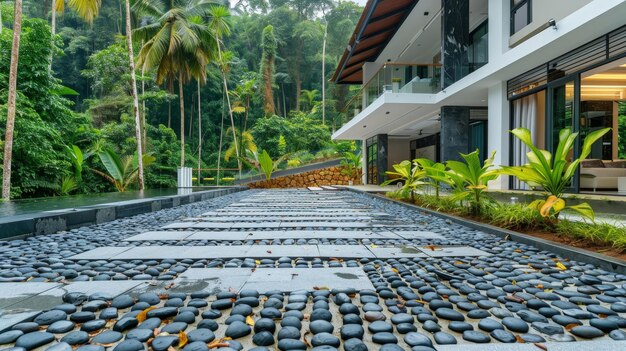Urban planning is shifting towards sustainability and innovation in today’s rapidly evolving world. Cities are making a concerted effort to lower their carbon footprints and improve their citizens’ living standards. Adopting sustainable urban paving solutions, which include innovative materials and techniques, is an often overlooked yet significant aspect of this shift. These solutions play an essential role in creating eco-friendly, resilient urban environments.
Integrating sustainable paving options into urban infrastructure is gaining traction due to their myriad benefits. From reducing environmental impact to improving economic efficiency, the advantages are multifaceted. For those interested in implementing these solutions, there are professional paving services available that specialize in sustainable practices. These services can guide cities through choosing suitable materials and techniques, ensuring a smooth and effective transition to sustainable paving.
Environmental Benefits
Sustainable paving materials often feature recycled components, significantly reducing waste and conserving natural resources. Porous pavements offer substantial benefits, allowing water to seep and recharge groundwater. This approach helps in effective water management and mitigates the risk of urban flooding. By improving water infiltration, these pavements help prevent excessive runoff, which can overwhelm drainage systems and cause erosion.
Permeable pavements can also help alleviate urban heat island effects by allowing water to pass through the surface, cooling the surrounding area. This cooling effect contributes to lower temperatures in densely populated cities, enhancing overall comfort for residents. Moreover, using lighter-colored paving materials can reduce heat absorption, making urban environments more comfortable and sustainable.
Economic Advantages
Despite their initial costs, sustainable paving solutions offer long-term economic benefits such as lower maintenance costs, energy consumption, and less frequent repairs. These pavements are durable and resilient, reducing maintenance frequency and costs. The use of recycled materials also reduces project costs. Sustainable pavements also enhance urban infrastructure’s longevity, reducing disruptions and lifecycle costs. It makes sustainable paving a prudent investment for cities seeking to maximize budget and resources while promoting environmental responsibility and resource conservation.
Aesthetic Improvements
Sustainable paving solutions benefit the environment and economy and enhance the visual appeal of urban spaces. These materials and techniques offer design flexibility, allowing for creative patterns that boost public areas’ aesthetic value. Urban planners can use sustainable paving to create attractive pedestrian pathways, plazas, and other public spaces that invite people to gather and enjoy their surroundings. Green concrete, decorative paving stones, and other sustainable materials contribute to a city’s unique identity, transforming ordinary areas into vibrant, aesthetically pleasing environments.
Technological Innovations
The paving industry is witnessing significant technological advancements aimed at enhancing sustainability. Innovations such as solar-powered pavements and intelligent materials that can self-heal minor damages are revolutionizing urban infrastructure. These cutting-edge solutions pave the way for more thoughtful, more resilient cities. Solar-powered pavements, for example, can generate renewable energy while providing a durable surface for pedestrians and vehicles.
These innovations are expected to become mainstream, offering cities new ways to modernize their infrastructure sustainably. The Internet of Things technology can be integrated into paving solutions to provide real-time maintenance and monitoring, which helps keep pavements in excellent condition and reduces the necessity for costly and time-consuming repairs.
Future Trends in Paving Solutions
The future of paving solutions is promising, with research and development focusing on sustainability and innovation. Emerging trends include biocomposite materials and IoT technology for improved monitoring and maintenance. These materials, made from renewable resources like plant fibers and resins, offer a sustainable alternative to traditional paving materials while maintaining high performance and durability. Adopting these futuristic paving solutions is crucial for building more intelligent, sustainable urban environments as cities grow. These trends address current challenges and pave the way for a greener, more resilient future, ensuring adaptable, efficient, and environmentally responsible infrastructure.
Final Thoughts on Sustainable Paving
Sustainable urban paving solutions offer numerous benefits, including environmental sustainability, economic efficiency, and aesthetic enhancement. They are crucial for creating resilient and eco-friendly landscapes in cities as they expand. These practices address current challenges and lay the groundwork for a greener future. They make urban areas more livable and adaptable to changing environmental conditions. Investing in sustainable paving is an investment in the future, benefiting current and future generations by creating healthier, more vibrant, and sustainable urban environments.



